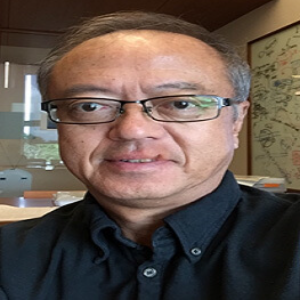Title : Molecular mechanisms underlying constitutive activation of the EGF receptor in glioblastoma
Abstract:
Glioblastoma multiforme (GBM) is a common form of adult primary brain tumor, and diffusely and aggressively invade both hemispheres of the brain. Patients prognosis is dismal with median survival times ranging from12 to 15 months after diagnosis. In primary GBMs, the epidermal growth factor receptor (EGFR) is overexpressed in nearly 50% cases, and approximately half of these cases additionally possess receptor mutations. The amplification of the EGFR gene is the major cause of the overexpression, and often accompanies deletions, insertions and missense mutations. Most of these mutations constitutively activate the receptor in the absence of bound ligand, and confer anchorage-independent growth and tumorigenicity to cells expressing the mutants.
The most common EGFR mutation in GBMs is EGFRvIII, in which a portion of the extracellular ligand-binding domain is deleted. Other mutations termed EGFRvIV were also identified in GBMs, and have the carboxyl terminal deletions. As an insertion mutation, a tandem kinase domain duplication termed TDK-EGFR has been detected in two GBM biopsy panels. Missense mutations in the extracellular domain were found in GBM, which conferred anchorage-independent growth and tumorigenicity to NIH 3T3 cells. Sequencing of EGFR in a large cohort of GBM patient also identified over 30 different missense mutations within the extracellular domain. Among them, cysteine residues present in Subdomain IV of the extracellular domain of the receptor.
Constitutive activation of EGFR by the overexpression and oncogenic mutation of the receptor have traditionally been explained by dimerization of the receptor monomers. A plethora of diverse studies, however, demonstrate that EGFR is present in a pre-formed, yet inactive, dimeric form prior to ligand binding. Furthermore, recent progress in structural studies has provided insight into conformational changes during the activation of the pre-formed dimeric receptor. Upon ligand binding to the extracellular domain of EGFR, its transmembrane domains rotate or twist parallel to the plane of the cell membrane, resulting in the reorientation of the intracellular kinase domain dimer from a symmetric inactive configuration to an asymmetric active form (the “rotation model”). This model is also able to explain how the oncogenic mutations described above activate the receptor in the absence of bound ligand, without assuming that the mutations induce the receptor dimerization. In this conference, we shall discuss how the diverse mutations in GBM constitutively activate the receptor based upon the “rotation model”.




